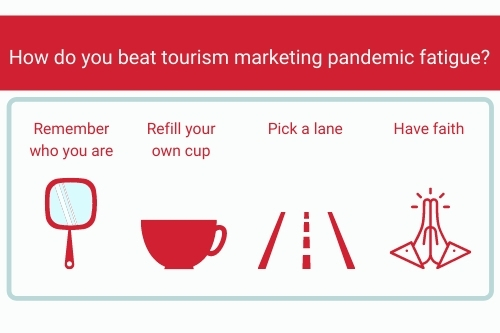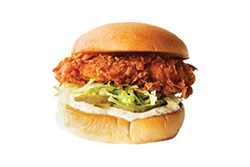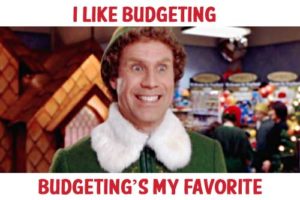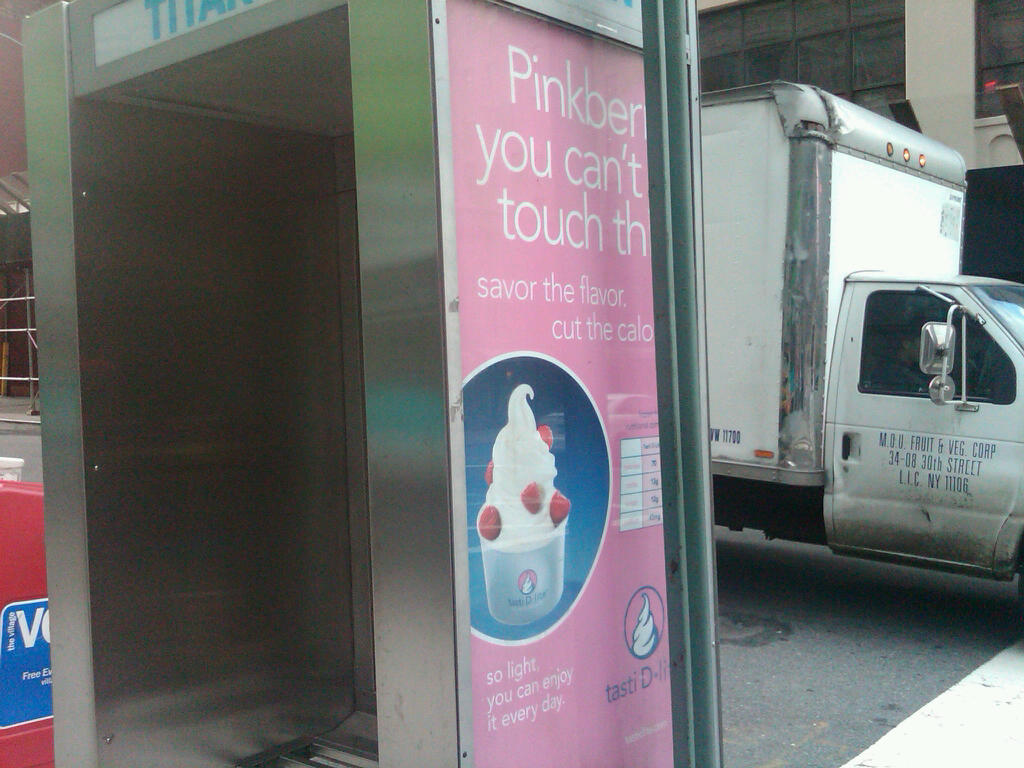
Let’s face it. Tourism and hospitality marketing is going through a brutal patch with this Covid-19 pandemic. Trying to align your marketing strategy with the ever-changing circumstances is like trying to take direction from a Magic 8 Ball.
And what makes it worse is that everyone – even within the same organization – has a different opinion on the best approach to tourism marketing during a pandemic. Keep spending or pull back to conserve resources? Talk incessantly about your safety measures or go more for the “business as usual” vibe? There’s no point in marketing because the pond of fish got too small. This is the best time to market because even though the pond is smaller, those fish are the ones ready and willing to bite.
But here’s one thing everyone can agree on: it’s exhausting. The uncertainty sucks a lot of the fun and satisfaction out of marketing… not to mention the permanent state of tension about our jobs, finances, health, and the state of the economy. And now that we’ve been in this madcap coronavirus purgatory for more than six months, we’re prime candidates for “tourism marketing pandemic fatigue.”
Characteristics?
- Loss of purpose (does this really even matter given the state of the world?)
- Indecisiveness (the future is too unpredictable to choose a path so I’ll just freeze)
- Box-checking (it’s too draining to be creative and do more than the minimum)
You may not even be aware you’re suffering from pandemic fatigue because it’s a sneaky little bugger. It’s like an invisible slow leak in a tire…diluting your performance (and that of your marketing program) without drawing attention to itself. And so you just keep putting one foot in front of the other daily, checking off tasks and trying valiantly to control things beyond your control.
Listen up, marketers. Don’t take pandemic fatigue lying down or you’re gonna end up as one irreversibly flat tire by the time this pandemic phase is over. Use these tips as a daily touchstone to patch the leak and breathe fresh air into your mindset.
1. Remember who you are. Marketing’s job is to be interesting, attractive, engaging, and informative…regardless of circumstances. Inspiring people is baked into our job descriptions. When everyone else – from operations and finance to maintenance, HR, and administration – is battered and overwhelmed, it’s our role to stay positive, focus on opportunities, and make people want to travel. Now more than ever, people want to be entertained while being informed…they want to dream of normalcy and joy…and they want to plan things that will bring fun back into their lives…and they are counting on YOU to give them these gifts. So yes… what you’re doing matters a lot to people. Remember that every day.
2. Refill your own cup daily. Lots of people roll their eyes when they hear the phrase “self care,” but there’s a reason airlines make you put your own oxygen mask on before helping others with theirs. “Marketing” is a thing, but “marketers” are human. If you don’t refuel and refresh yourself as a human – daily – you won’t have the mental and emotional resources needed to keep returning to the battle of inspiring others. Being a cheerleader during difficult times takes massive amounts of energy and it’s your responsibility to replenish the depletion constantly. Whatever refreshes you – coffee, silence, wine, meditation, dogs, exercise, showers, solitude, naps, music, and so on – think of it as an essential part of your job right now. Make time for it.
3. Pick a lane and own it. If uncertainty over the best path is constantly weighing you down, stop trying to plow through despite not being at peace with your choices. Budgets, content, strategy… the more time and energy you waste second-guessing yourself, I guarantee you, the less effective your efforts will be. Yes, you need to be nimble and adapt to evolving circumstances, but nothing dilutes the power of marketing like hesitancy. If you’re still uncertain about spending, sharing your safety measures too much/not enough, hard selling vs. brand awareness, the marketing channels you should be using right now, or anything else… stop, sit back, and think about it until you reach a decision. Need a sounding board to talk it through? Just holler. miranda@redpointspeaks.com. No strings.
4. Have faith in marketing, even if today’s results seem dismal. This is a huge test of your beliefs as a marketer. My experience over nearly 30 years as a tourism marketer is that a consistent voice and presence – through economic crisis, natural disasters, crime waves, weather disappointments, high season, low season, shoulder season… whatever – gets the best overall, long-term ROI. Your conversion volume may be way lower than usual right now, but you’ve got to keep investing in your awareness equity. People don’t stop interacting with life because of a pandemic. They plan and dream and build anticipation. And once they’re willing and allowed to travel, you want them to think of YOU. Will you be able to trace just how much your consistent marketing led to direct sales because you stayed top of mind? Nope. But that’s where the faith part comes in. You’ve got to believe it works or that whisper of doubt will sabotage your success.
Listen, I get it. It sucks to be in this position. But we’ve all survived other rough circumstances in life and we’ll conquer this one too, as long as we fight the fatigue.
And if you heard James Earl Jones’ voice as Mufasa when you read the words “remember who you are,” I salute you as my humor soulmate and suspect you’re gonna be just fine.
 get travel marketing tips
get travel marketing tips 
 If you’re a marketer, there’s a good chance you watched the debut of
If you’re a marketer, there’s a good chance you watched the debut of 
 Oh wait… did you just gloss over that last sentence without stopping to really absorb what it means, and what you should do about it? As if that was just another piece of blah-blah advice from a marketer? “Spend more time thinking about your marketing before taking action.” Duh. Of course that’s good advice, you say. So basic. I knew that. Give me something REALLY meaty to chew on, like something I didn’t know before.
Oh wait… did you just gloss over that last sentence without stopping to really absorb what it means, and what you should do about it? As if that was just another piece of blah-blah advice from a marketer? “Spend more time thinking about your marketing before taking action.” Duh. Of course that’s good advice, you say. So basic. I knew that. Give me something REALLY meaty to chew on, like something I didn’t know before. It’s budget season, y’all. This means many of you are armed – or are scrambling to get armed – with that pristine, oh-so-buttoned-up spreadsheet that will guide your marketing spend choices for 2020. And while it may be pretty and precise enough for your mom to put on her refrigerator, there’s only one thing that should matter to you: is it sound and will it work?
It’s budget season, y’all. This means many of you are armed – or are scrambling to get armed – with that pristine, oh-so-buttoned-up spreadsheet that will guide your marketing spend choices for 2020. And while it may be pretty and precise enough for your mom to put on her refrigerator, there’s only one thing that should matter to you: is it sound and will it work?










